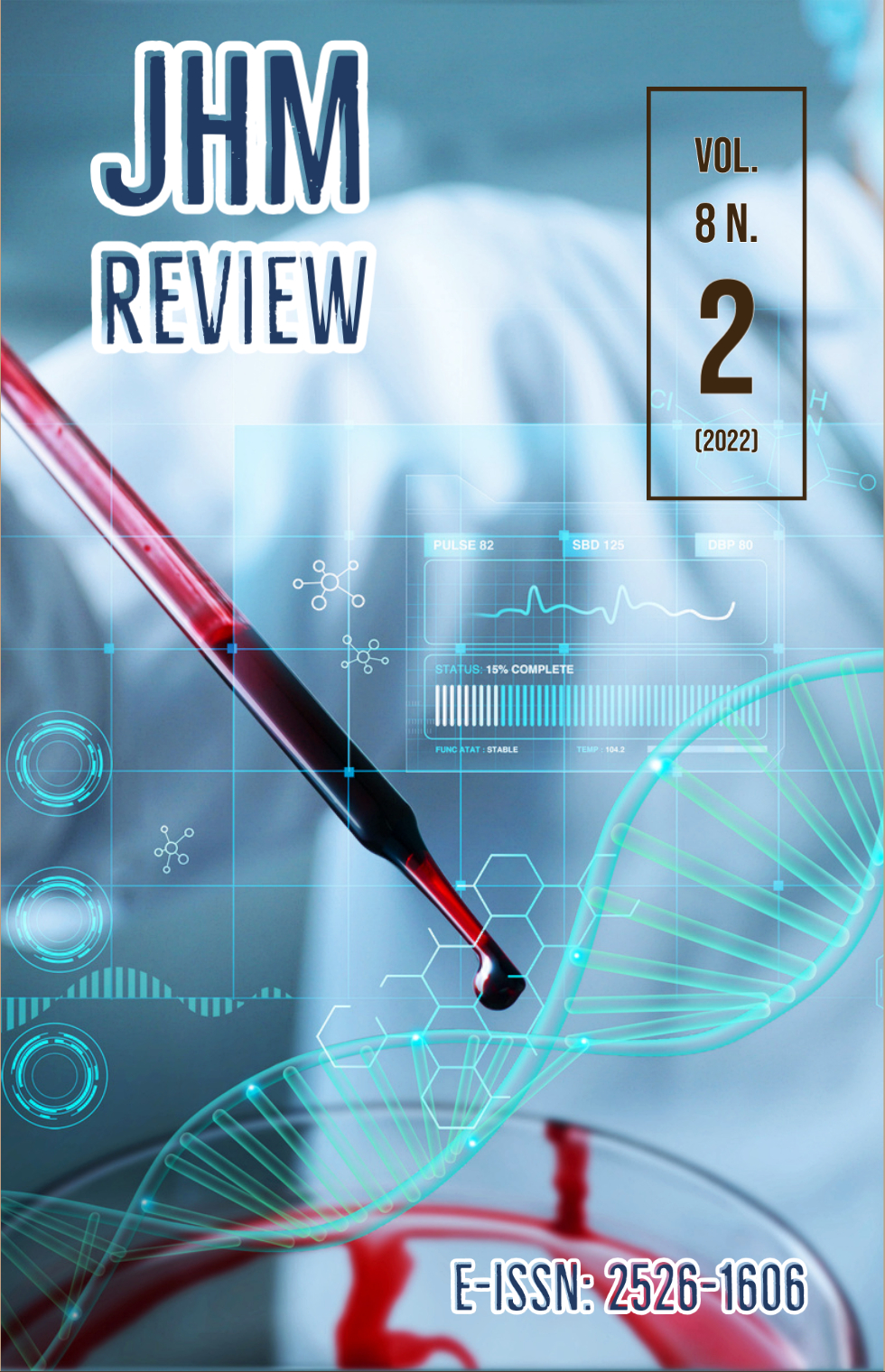Percepção dos Pacientes Em Relação Aos Benefícios da Intervenção Coronariana Percutânea Na Doença Arterial Coronariana Estável
DOI:
https://doi.org/10.37497/ijhmreview.v8i2.321Palavras-chave:
Angioplastia Transluminal Percutânea Coronária, Doenças Cardiovasculares, Doença das Coronárias, Percutaneous Transluminal Coronary Angioplasty, Cardiovascular Diseases, Coronary Artery DiseaseResumo
Introdução: A intervenção coronária percutânea (ICP) é um procedimento comum para aliviar a obstrução de uma artéria coronária estenótica. As crenças dos pacientes sobre a necessidade do procedimento e sua eficácia são moldadas pela interação com os médicos assistentes. Sendo assim, toda decisão envolvendo o procedimento deve ser tomada de maneira conjunta entre o paciente e o médico, e este deve ajudar o sujeito a compreender a probabilidade dos benefícios esperados e os riscos a serem enfrentados na intervenção, atuando como um parceiro experiente.
Objetivo: Avaliar a percepção dos pacientes referente aos benefícios e riscos da ICP baseando-se em informações dadas pelo médico assistente.
Método: Por meio de um estudo descritivo longitudinal realizado com pacientes diagnosticados com Insuficiência Coronariana internados no HUSF.
Resultados: Ao analisar os benefícios esperados, numa fração da amostra, por meio da realização da ICP, 26% dos pacientes gostariam de evitar o infarto agudo do miocárdio, 26% queriam diminuir sua possibilidade de morrer, 10% buscavam viver mais, 40% desejavam diminuir as dores no peito, 5% gostariam de tomar menos medicamentos, 25% desejavam diminuir a dispneia e 15% não sabiam responder. Todos os pacientes disseram que os riscos do procedimento não foram abordados na conversa, e apenas um paciente sabia informar possíveis riscos por conhecimento prévio.
Conclusão: Notou-se a existência de falhas na comunicação entre o médico e o paciente, evidenciada pela superestimação dos benefícios e subestimação dos riscos na realização da ICP.
Referências
ARMAGANIJAN, D.; BATLOUNI, M. Impacto dos fatores de risco tradicionais. Rev. Soc. Cardiol. Estado de Säo Paulo, p. 686–693, 2000.
BARI 2D STUDY GROUP et al. A randomized trial of therapies for type 2 diabetes and coronary artery disease. The New England Journal of Medicine, v. 360, n. 24, p. 2503–2515, 11 jun. 2009.
BODEN, W. E. et al. Optimal medical therapy with or without PCI for stable coronary disease. The New England Journal of Medicine, v. 356, n. 15, p. 1503–1516, 12 abr. 2007.
DE BRUYNE, B. et al. Fractional flow reserve-guided PCI versus medical therapy in stable coronary disease. The New England Journal of Medicine, v. 367, n. 11, p. 991–1001, 13 set. 2012.
GUTMAN, J.; GUTMAN, J. The right not to know and coronary angiography: is the common law of Australia consistent with patients’ wishes. Journal of law and medicine, v. 10, n. 2, p. 168–173, 1 nov. 2002.
HEKKENBERG, R. J. et al. Informed consent in head and neck surgery: how much do patients actually remember? The Journal of Otolaryngology, v. 26, n. 3, p. 155–159, jun. 1997.
LAVELLE-JONES, C. et al. Factors affecting quality of informed consent. BMJ (Clinical research ed.), v. 306, n. 6882, p. 885–890, 3 abr. 1993.
MARK, J. S.; SPIRO, H. Informed consent for colonoscopy. A prospective study. Archives of Internal Medicine, v. 150, n. 4, p. 777–780, abr. 1990.
MCNUTT, R. A. Shared medical decision making: problems, process, progress. JAMA, v. 292, n. 20, p. 2516–2518, 24 nov. 2004.
PRILUCK, I. A.; ROBERTSON, D. M.; BUETTNER, H. What patients recall of the preoperative discussion after retinal detachment surgery. American Journal of Ophthalmology, v. 87, n. 5, p. 620–623, maio 1979.
SÃO LEÃO, A. M. O.; VILAGRA, M. M. Perfil dos pacientes submetidos à intervenção coronariana percutânea no serviço de hemodinâmica do hospital universitário sul fluminense, Vassouras-RJ. Revista de saúde, v. 3, n. 1, p. 27–32, 2012.
SIMON, J. et al. The variable effects of angiotensin converting enzyme inhibition on myocardial ischaemia in chronic stable angina. British Heart Journal, v. 62, n. 2, p. 112–117, ago. 1989.
WHITNEY, S. N. A new model of medical decisions: exploring the limits of shared decision making. Medical Decision Making: An International Journal of the Society for Medical Decision Making, v. 23, n. 4, p. 275–280, ago. 2003.
WHITTLE, J. et al. Understanding of the benefits of coronary revascularization procedures among patients who are offered such procedures. American Heart Journal, v. 154, n. 4, p. 662–668, out. 2007.
WOOLF, S. H. et al. Promoting informed choice: transforming health care to dispense knowledge for decision making. Annals of Internal Medicine, v. 143, n. 4, p. 293–300, 16 ago. 2005.
WYMAN, R. M. et al. Current complications of diagnostic and therapeutic cardiac catheterization. Journal of the American College of Cardiology, v. 12, n. 6, p. 1400–1406, dez. 1988.
Downloads
Publicado
Como Citar
Edição
Seção
Licença

Este trabalho está licenciado sob uma licença Creative Commons Attribution-NonCommercial-NoDerivatives 4.0 International License.
Autores que publicam nesta revista concordam com os seguintes termos:
O(s) autor(es) autoriza(m) a publicação do texto na da revista;
O(s) autor(es) garantem que a contribuição é original e inédita e que não está em processo de avaliação em outra(s) revista(s);
A revista não se responsabiliza pelas opiniões, idéias e conceitos emitidos nos textos, por serem de inteira responsabilidade de seu(s) autor(es);
É reservado aos editores o direito de proceder a ajustes textuais e de adequação às normas da publicação.
Autores mantém os direitos autorais e concedem à revista o direito de primeira publicação, com o trabalho simultaneamente licenciado sob a Licença Creative Commons Attribution que permite o compartilhamento do trabalho com reconhecimento da autoria e publicação inicial nesta revista.
Autores têm autorização para assumir contratos adicionais separadamente, para distribuição não-exclusiva da versão do trabalho publicada nesta revista (ex.: publicar em repositório institucional ou como capítulo de livro), com reconhecimento de autoria e publicação inicial nesta revista.
Autores têm permissão e são estimulados a publicar e distribuir seu trabalho online (ex.: em repositórios institucionais ou na sua página pessoal) a qualquer ponto antes ou durante o processo editorial, já que isso pode gerar alterações produtivas, bem como aumentar o impacto e a citação do trabalho publicado (Veja O Efeito do Acesso Livre) em http://opcit.eprints.org/oacitation-biblio.html















